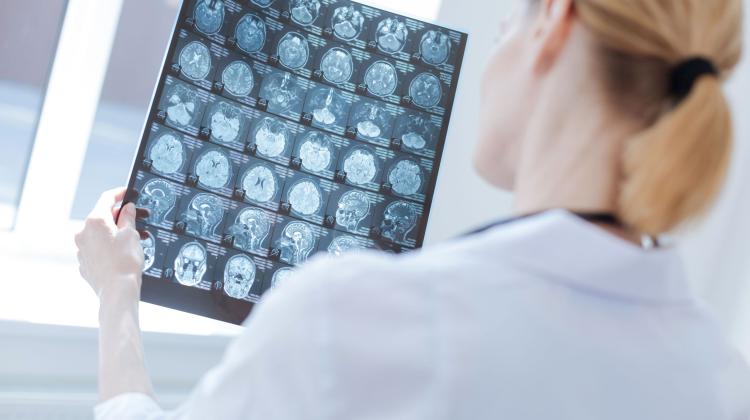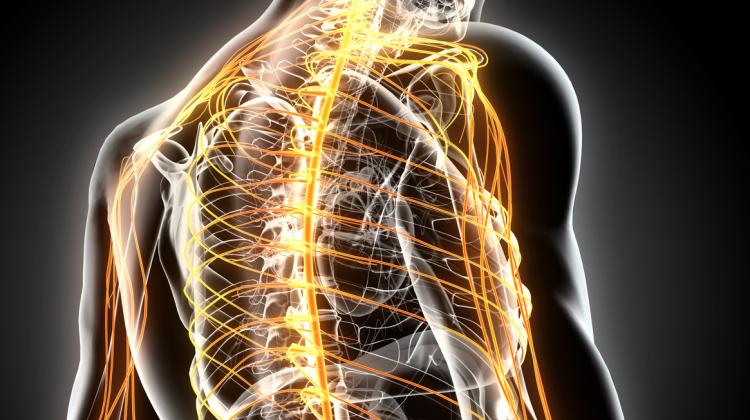Let`s Get Physical! Workout, Especially Cardio, "Rejuvenates" the Nervous System
 Credit: Fotolia
Credit: Fotolia
Physical effort benefits not only the body, but also the mind, because it "rejuvenates" the nervous system, says biologist and trainer Dr. Anita Florkowska. She explains that endurance training (cardio) is better than strength training when it comes to maintaining a healthy nervous system.
"In older people, with age, there is a gradual loss of muscle mass and strength, so-called sarcopenia. It is associated not only with changes, e.g. hormonal or in the circulatory system, but also degenerative changes in the nervous system. As a result of ageing, gradual fragmentation and loss of neuromuscular junctions are observed. The muscles are less frequently stimulated by the nervous system, they weaken, can degenerate and even disappear," says biologist Dr. Florkowska from the University of Warsaw. She adds that age-related muscle weakness results in poor precision and coordination of movements, problems with balance and mobility, and a slower response to external stimuli.
"Physical exercise can help significantly slow down the changes that take place in the nervous system with age," she says, adding: "Physical activity not only keeps the body in good shape, it benefits the nervous system as well."
Dr. Florkowska explains that every type of properly performed during physical training works neuroprotectively, it causes beneficial changes in the neuromuscular junctions and the entire nervous system. "However, endurance training has been shown to stimulate the nervous system much better than strength exercise. The effects of such stimulation can be twice as strong," she says.
She explains that endurance effort (including dynamic exercises, often called cardio or aerobic) includes running, jumping, swimming, dancing, cycling and interval training. As a result of such training, the heart works much faster, the number of breaths increases, and our fitness and physical condition improve.
In turn, the effort that the biologist mentions includes mainly static exercises, stimulating single muscle parts, not the whole body: exercises with dumbbells or weights, exercises with body weight.
The biologist suggests not skipping endurance exercises (cardio).
HOW DOES INFORMATION FLOW BETWEEN THE NERVOUS AND MUSCULAR SYSTEM?
"During training, the central nervous system (brain and spinal cord) decides which muscles to stimulate to work and what strength and power to assign to this stimulation," says Dr. Florkowska. She explains that the impulse that travels from the brain through the spinal cord to the end of the motor neuron contacting the muscle fibre (neuromuscular junction), causes the secretion of a neurotransmitter - acetylcholine. Acetylcholine binds to receptors present on the surface of muscle fibres. This begins a cascade of changes leading to muscle contraction.
In mammals, there are also feedback signals from muscles to the brain. Thanks to this, the muscle can inform the nervous system about its increased needs caused by physical training and thus get support in adapting to increasingly intense exercises. In response to physical exercise, muscles produce special proteins called neurotrophins, which signal the nervous system to create new motor neurons or expand existing ones. And this improvement of neuromuscular communication means that the muscle will be more stimulated to work and more resistant to fatigue.
RESULTS OF EXPERIMENTS
"It has been shown in experimental conditions that under the influence of regular endurance exercises (running, swimming), the nervous system of older mice becomes similar to the nervous system of younger mice," describes Dr. Florkowska.
Scientists also noticed that the extent of adaptive changes in the neuromuscular junctions depended on the type of exercise performed. Endurance (cardio) exercises were a stronger stimulus for "rejuvenating" the structure of neuromuscular junctions compared to strength exercises.
It turns out that due to physical activity, the number of motor neurons - the ones in contact with muscles - increases. These nervous system cells are also thicker and more branched. The authors of the research describe this effect as hypertrophy of neuromuscular junctions, consisting in increasing the number, area and length of branches of motor neurons located near muscle fibres.
Dr. Florkowska also mentions another study on mice that would run on a treadmill for 12 weeks. "Researchers observed a 30 percent increase in acetylcholine production at the nerve endings." Moreover, in the muscles of rats that ran or swam, researchers observed improved mechanisms for transmitting nerve impulses, which significantly increased muscle resistance to fatigue.
"In addition, endurance exercises, not strength exercises, shows that statistically more acetylcholine receptors were created in the muscle fibre membrane," says Dr. Florkowska. Strength exercises also stimulated the reconstruction of neuromuscular junctions, but the extent of these changes was about 50 percent smaller compared to the effects of endurance effort.
HOW DO THE EXPERIMENTS TRANSLATE TO LIFE?
"In mammals, including humans, in addition to brain-muscle information flow, there is so-called `feedback` signalling: muscle-brain, which protects against the loss of nerve cells progressing with age, providing strength and vitality to those who regularly exercise," she says.
She explains that endurance effort improves our efficiency, speed and agility, in part thanks to adaptations in the nervous system. "Therefore, if someone only does strength exercises, it is better to quickly expand their workout plan with endurance exercises. Thanks to this, they will stimulate their nervous system to greater activity and maintain fitness for years.”
PAP - Science in Poland, Ludwika Tomala
lt/ agt/ kap/
tr. RL
Przed dodaniem komentarza prosimy o zapoznanie z Regulaminem forum serwisu Nauka w Polsce.


















